In today’s tightly interwoven global economy, product sourcing has transformed from a linear supply chain task into a multifaceted strategic undertaking. Corporations, from nascent startups in Brooklyn lofts to century-old conglomerates headquartered in Tokyo, increasingly recognize that how they source defines not only their cost structures but also their brand ethos, sustainability commitments, and geopolitical agility.
Streamlining global product sourcing is no longer a matter of simply chasing the lowest cost. It is about orchestrating a delicate symphony of risk mitigation, supplier collaboration, data analytics, regulatory compliance, and ultimately, customer satisfaction.
In this playbook, we explore the nuanced layers and often-overlooked subtleties of building a resilient, streamlined global sourcing strategy.
Beyond Cost: The Rise of Value-Centric Sourcing
For decades, "low-cost country sourcing" was the undisputed mantra in boardrooms. Executives would zero in on countries with inexpensive labor, minimal regulatory burdens, and favorable tax structures. While cost is undeniably vital, the pandemic, trade wars, and climate-driven disruptions have collectively shifted the focus toward a more holistic, value-driven approach.
Value-centric sourcing looks beyond the invoice price. It contemplates total cost of ownership, quality consistency, speed-to-market, and brand reputation. For example, a retailer might choose a slightly more expensive supplier in Vietnam over a cheaper one in Bangladesh because of stronger environmental compliance and fewer risks of labor scandals, a trade-off that resonates with socially conscious consumers and investors alike.
Moreover, value-centric sourcing encourages companies to consider local market access. A supplier in Eastern Europe might open doors to EU markets under preferential trade agreements, thereby justifying higher up-front costs with longer-term strategic advantages.
Data-Driven Decision Making: From Gut to Algorithm
Sourcing decisions once depended heavily on relationships and executive intuition. Veteran procurement heads would rely on gut feelings and anecdotal evidence gleaned from decades of factory visits. Today, algorithms and predictive analytics increasingly inform these choices.
Advanced analytics platforms can integrate historical purchase data, supplier performance metrics, geopolitical risk assessments, and even real-time shipping data to recommend optimal sourcing strategies. Machine learning models can forecast supply disruptions and suggest alternative sourcing plans before crises hit.
Yet, here lies a nuanced reality: data alone is not a panacea. Algorithms are only as good as the data fed into them, and procurement remains as much an art as a science. A successful leader must blend quantitative insights with qualitative supplier relationships, maintaining the human touch that fosters trust, flexibility, and innovation.
Diversification and Redundancy: The New Pillars of Resilience
The mantra of "just-in-time" has given way to "just-in-case." Supply chain disruptions during the COVID-19 pandemic revealed the fragility of over-optimized networks. As a result, companies have begun to embrace redundancy, previously considered anathema to lean operations.
Strategic redundancy means deliberately maintaining alternative suppliers and dual sourcing options, even if it entails higher operational costs. Apple, for instance, famously diversifies its manufacturing across multiple regions, reducing dependency on any single geopolitical hotspot. Similarly, automotive giants have begun to spread their component sourcing across Southeast Asia and Latin America to hedge against regional instabilities.
Diversification is not simply about geography. It can involve splitting production between different supplier types, large industrial powerhouses, and nimble niche players, or even diversifying production methods, such as combining traditional manufacturing with additive manufacturing (3D printing). These layers of flexibility enable companies to respond nimbly to shocks, protect revenue, and maintain service levels.
Supplier Relationship Management: Moving Beyond Transactions
Traditionally, sourcing was transactional: find the lowest bid, negotiate terms, move on. However, companies now understand that long-term supplier relationships are strategic assets, not mere cost centers.
Investing in supplier relationship management (SRM) means co-developing products, sharing forecasts, and sometimes even investing in joint R&D initiatives. Japanese keiretsu networks exemplify this collaborative ethos, creating tightly knit supplier ecosystems that prioritize mutual success over cutthroat competition.
There is also a cultural nuance here. In many Asian contexts, relationships and trust-building rituals, such as factory visits, shared meals, and ceremonial gift exchanges, play a pivotal role in establishing reliable partnerships. In contrast, Western firms might emphasize formal performance metrics and contractual safeguards. Successful global sourcing leaders know how to adapt to these cultural contours, blending hard metrics with soft power.
The Sustainability Imperative: Ethics as Strategy
Sourcing is increasingly scrutinized through the lens of environmental, social, and governance (ESG) performance. Consumers, regulators, and investors alike demand transparent, ethical, and eco-friendly supply chains.
A strategic playbook for global sourcing must embed sustainability at its core. This means not just compliance with environmental standards, but proactive initiatives such as carbon footprint reduction, circular economy programs, and fair labor practices. For example, brands like Patagonia and IKEA invest heavily in supply chain audits and sustainability certifications to back up their green pledges.
There’s also an operational layer here. Renewable energy adoption at supplier facilities, investment in cleaner logistics (like electric freight vehicles), and biodegradable packaging all contribute to a more resilient and future-proof supply chain.
Moreover, sustainability can be a differentiator rather than a compliance checkbox. As regulations tighten and carbon taxes expand globally, sustainable sourcing may soon become the lower-cost option in the long run, a paradigm shift many leaders still underestimate.
Regulatory and Geopolitical Agility: Navigating an Uncertain World
Tariffs, sanctions, and shifting trade policies create a turbulent backdrop for global sourcing. The U.S.-China trade war, Brexit, and Russia’s invasion of Ukraine have all underscored the strategic necessity of geopolitical agility.
Astute sourcing leaders closely monitor trade agreements, local labor laws, and customs regulations. They maintain legal teams and consultants on retainer to rapidly assess the implications of new tariffs or export restrictions. Flexibility here might involve "nearshoring", moving production closer to end markets, or "friend-shoring," where companies source from politically allied nations to minimize risks.
Understanding these nuances can yield unexpected competitive advantages. For instance, shifting partial assembly to Mexico can allow companies to leverage USMCA trade benefits while maintaining access to U.S. markets. Such moves require intricate financial modeling and scenario planning, blending procurement acumen with geopolitical foresight.
Technological Enablement: Digital Transformation of Sourcing
Technologies like Blockchain, Internet of Things (IoT), and artificial intelligence (AI) are fundamentally reshaping global sourcing practices. Blockchain offers unprecedented traceability, helping brands prove the origin of raw materials and prevent counterfeiting. IoT devices enable real-time monitoring of production quality and logistics, providing data streams that improve supply chain transparency.
Furthermore, automation tools can handle tasks such as RFQ (Request for Quotation) generation, compliance checks, and supplier onboarding, freeing human talent to focus on strategic negotiations and relationship building.
But digital transformation is not without its challenges. Cybersecurity threats, integration issues with legacy systems, and data privacy regulations can complicate these initiatives. Companies must invest in robust cybersecurity frameworks and change management programs to ensure successful technological integration.
Talent and Organizational Design: Building the Right Team
Sourcing strategy is not just about external partnerships; it also depends on internal capabilities. Leading firms are rethinking the structure and skill sets of their procurement teams.
Today’s procurement professionals need expertise in analytics, risk management, ESG compliance, and cross-cultural negotiations. They must also be comfortable navigating complex technology stacks and interpreting data-driven insights. Moreover, global sourcing leaders increasingly seek "T-shaped" professionals: individuals with deep expertise in one area but broad understanding across functions.
Organizationally, many firms are moving away from highly centralized procurement models toward hybrid or decentralized approaches, allowing local teams to adapt strategies to regional realities while maintaining global oversight.
The Human Factor: Nuances of Cross-Cultural Negotiations
While systems, data, and processes are crucial, the human factor remains irreplaceable. Global sourcing inevitably involves navigating a tapestry of cultures, each with its own unwritten rules and business etiquette.
For example, in China, patience and building "guanxi" (relationships) are often more critical than immediate price advantages. In Germany, meticulous planning and punctuality are prized, and deviations from agreed schedules can be seen as serious breaches of trust. In India, flexibility and adaptability to rapidly changing conditions are vital.
Understanding these subtleties can mean the difference between a successful negotiation and a diplomatic disaster. Many top-performing sourcing executives invest years developing cultural fluency and local networks, often engaging cultural advisors or in-market liaisons.
Scenario Planning and Risk Simulations: Preparing for the Unknown
The best sourcing strategies are not static blueprints but living frameworks capable of adapting to unforeseen shocks. Scenario planning allows companies to model different futures, from natural disasters and pandemics to sudden regulatory changes and supplier bankruptcies.
Sophisticated firms use risk simulations and digital twins of their supply chains to test vulnerabilities and experiment with mitigation strategies. This proactive approach contrasts sharply with the reactive "firefighting" that characterizes less mature sourcing operations.
Scenario planning also enables strategic conversations at the board level, ensuring that sourcing decisions are aligned with corporate risk appetites and long-term growth ambitions.
The Psychological Layer: Trust, Transparency, and Brand Integrity
In a world where consumers can instantly share images of a factory fire or an unethical labor practice on social media, trust and transparency have become competitive moats.
Smart sourcing leaders understand that brand integrity is inextricably linked to supply chain integrity. This means establishing end-to-end transparency and communicating clearly with consumers about sourcing practices. Brands that openly share supply chain maps and third-party audit results, such as Everlane’s "Radical Transparency" model, cultivate trust that transcends price wars.
Internally, transparency fosters accountability and organizational cohesion. Procurement teams that operate in silos or guard information out of turf wars inadvertently weaken resilience. A culture of openness, supported by digital tools and strong leadership, creates a more robust foundation for global sourcing.
Reimagining the Future: Toward Antifragile Sourcing
The ultimate goal for modern sourcing leaders is not merely to survive shocks but to emerge stronger from them. This concept, famously articulated by Nassim Nicholas Taleb as "antifragility," is particularly apt in the context of global sourcing.
Antifragile sourcing systems are designed to adapt, learn, and evolve in response to volatility. Rather than minimizing variability, they harness it, learning from small disruptions to prepare for larger ones. This might involve investing in modular production capabilities, fostering agile supplier networks, or creating "fail-fast" pilots to experiment with new materials and technologies.
Adopting an antifragile mindset requires an organizational shift from efficiency obsession to resilience obsession, from rigid KPIs to adaptive learning metrics. It demands courageous leadership and a willingness to embrace complexity rather than simplify it away.
Conclusion: Sourcing as a Strategic Imperative
Global product sourcing, once relegated to the back office as a purely operational function, has now become a central pillar of corporate strategy. It embodies an intricate interplay of cost, value, risk, ethics, technology, culture, and psychology.
The ultimate playbook for streamlining global product sourcing is not a static document but a dynamic, evolving philosophy. It calls for leaders who are as comfortable discussing carbon credits as they are negotiating terms; who can decipher AI analytics dashboards in the morning and share tea with a potential supplier in the evening.
In an era marked by rapid technological advances, geopolitical upheavals, and increasingly vocal consumers, sourcing excellence is no longer optional, it is existential. Those who master this strategic craft will not merely keep their supply chains intact but will unlock new value streams, fortify their brand reputations, and drive enduring competitive advantage.
The future of global product sourcing is layered, nuanced, and perpetually in flux. In mastering its complexity lies the promise of not just resilience, but true transformation.



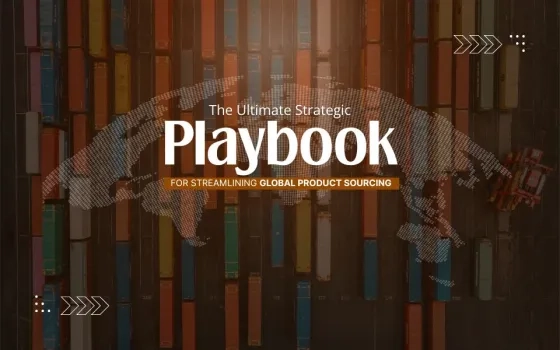
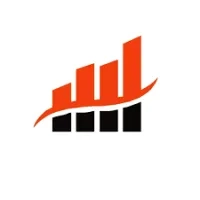
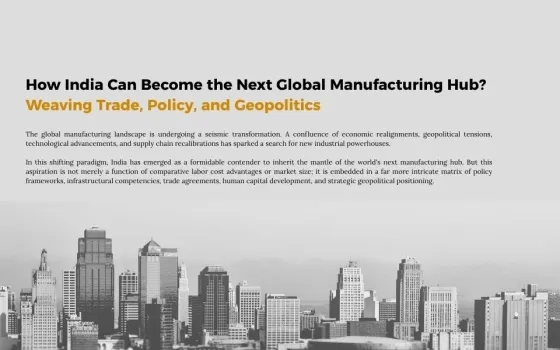

![[Part 2] The Geopolitical Chessboard: Navigating the US-China AI Rivalry and Strategic Imperatives for Indian Tech Startups](https://community.nasscom.in/sites/default/files/styles/560_x_350/public/media/images/ChatGPT%20Image%20Jul%203%2C%202025%2C%2005_43_59%20PM-edited.png.webp?itok=95KRqnmN)

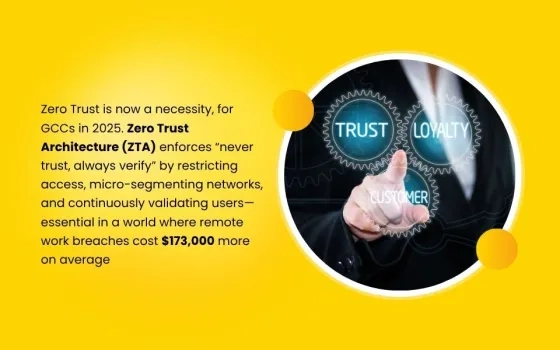
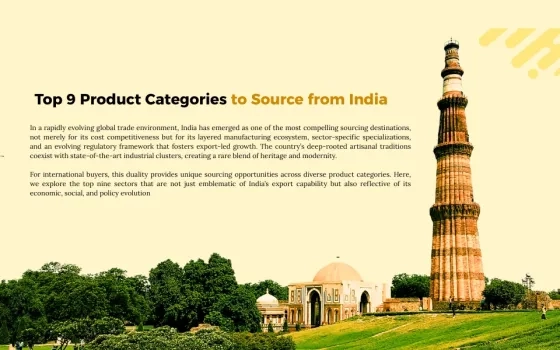

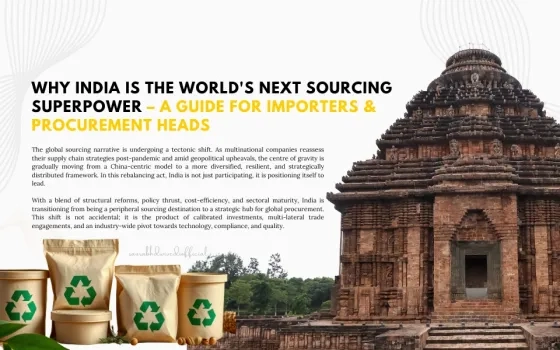
![[Part 1] The Geopolitical Chessboard: Navigating the US-China AI Rivalry and India's Strategic Imperatives](https://community.nasscom.in/sites/default/files/styles/560_x_350/public/media/images/ChatGPT%20Image%20Jun%2014%2C%202025%2C%2005_39_04%20PM-edited.png.webp?itok=wAYin69A)
